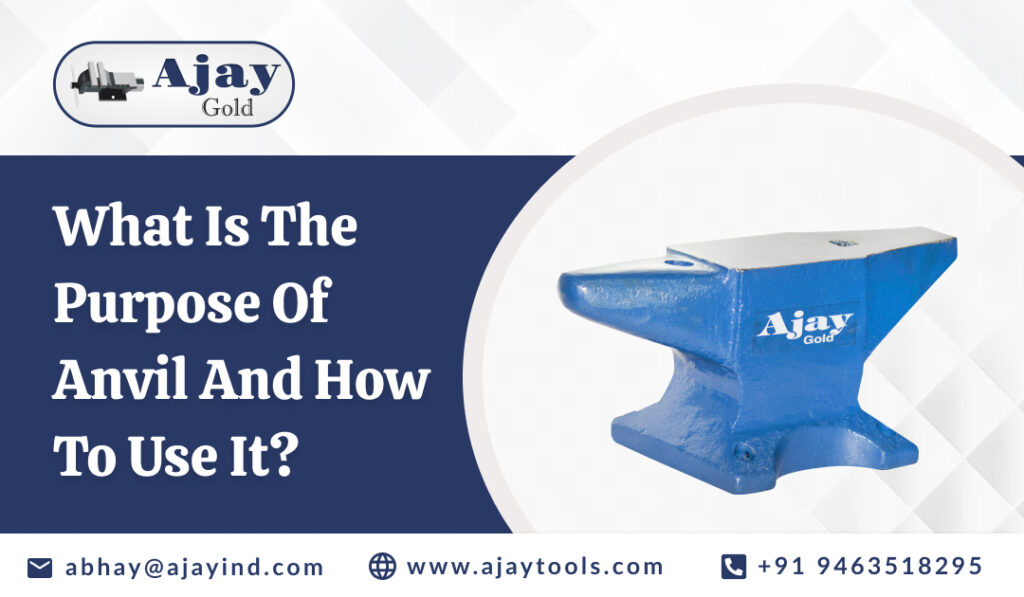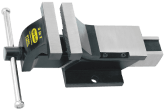Wondering what is the purpose of anvil? How to use it? This blog post will explain each aspect of the anvil so you will know how the anvil is used to deform the metal. Let’s get started:
What are the uses of an anvil?
An anvil is a solid and heavy block of steel or iron with a flat surface. The purpose of the anvil is to hammer, cut and shape metal for different projects. Anvils are considered an essential tool used in metalworking. Historically, anvils were made of stone. Their versatility and durability have made them a vital tool in blacksmithing and other trades that include metalwork.
Shaping metals
An anvil horn is used to curve and bend metal pieces. The horn is useful for creating rounded angles and shapes, as its tapered, conical design enables gradual and smooth bends. This process is crucial for forming rings, hooks, and other curved items. By heating the metal, metalworkers can change its shape with control and precision.
Flattening metal
The flat surface of the anvil helps you flatten metal pieces. By hammering the metal on this smooth face, metalworkers can achieve the desired thickness of the metal pieces. This task is crucial for further joining or shaping processes.
Cutting metal
The hardy hole of the anvil is used to hold several cutting tools, such as hardy cutters. To perform this task, you can place the metal workpiece over the hardy cutter that is held in the hardy hole, and strike it with a hammer to achieve a precise and clean cut. This process is crucial for cutting metal to particular lengths.
Punching holes
You can punch holes in metal using the pritchel hole. A punch tool is positioned over the hole, and you can strike it with a hammer to create openings in the workpiece. This is helpful for tasks such as creating rivet holes, bolt holes, or other required openings in metal pieces. There are different blacksmith anvil types available on the market with different shapes, so you can choose as per your needs.
What are the parts of an anvil?
- The face: It is a plain top surface where hammering is done. This part of the anvil must be smooth and solid to bear the effect of repeated hammer strikes so that you can give a consistent and precise shape to the metal.
- The horn: You can shape and bend metal using the horn of an anvil. It is round and tapers to a point, which makes it appropriate for creating complex shapes and curves that can’t be achieved through the flat surface of the anvil.
- The hardy hole: It is a square hole present in the anvil’s face that secures several tools, such as bending jigs and hardy cutters.
- The pritchel hole: It is a round and small hole used for punching holes in metal. It is used for creating bolt holes, offering a suitable way to add functionality to metal elements.
Why are anvils shaped the way that they are?
Anvils are shaped to assist with the blacksmithing process. They have various shapes, angles, and surfaces to help blacksmiths shape their materials. While beginner blacksmiths may see the anvil simply as a surface for hammering materials, experienced blacksmiths understand that each curve and line of the anvil is useful for different shaping processes. For instance, a blacksmith will use the flat top of the steel block for flattening materials, and the side to bend and shape a curved piece.
How to use an anvil?
When you set up your workspace, make sure to place the anvil on a solid and stable surface. Ensure that it is fastened securely to prevent slippage during use. Ensure that the anvil is at the correct height. Accurate height position can minimise strain.
Conclusion
Now that you know the purpose of anvil, and how you can use it. Despite this, if you are looking to buy durable and best-quality anvils for your workshop DIY projects, you can explore anvils of different sizes at Ajay Tools.


